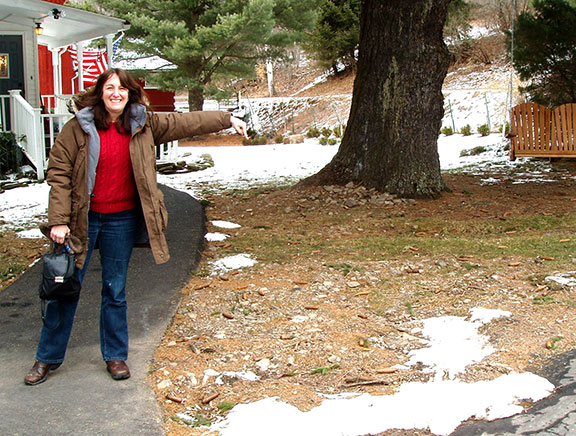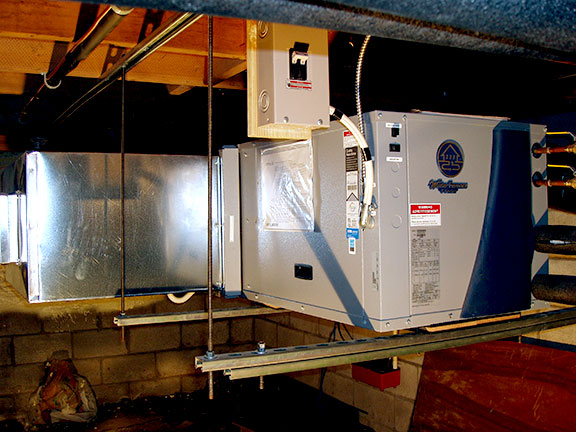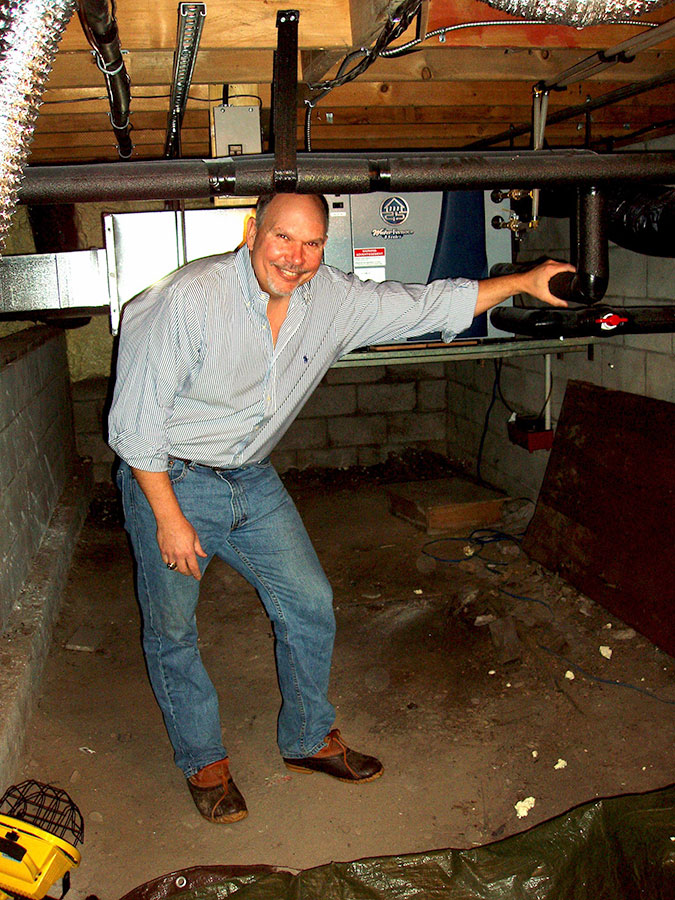Reconsidering Geothermal Systems
If you have long presumed, as this writer did, that geothermal heating and cooling were practical only for vast industrial complexes or newly constructed McMansions, think again.
“The house was always cold, even with the electric heaters on,” says Bryan Babcock, co-owner with his wife Betsy of Handsome Brook Farm and Bed & Breakfast on East Handsome Brook Road in Franklin. “Now the house is always warm.”
In the spring of 2012, the Babcocks had a geothermal system installed. It was up and running in just over a week.
“And in the summer,” Betsy adds, “it’s always cool.”

Keeping faith with their goal of a sustainable life style, the Babcocks attended a clean energy conference in Syracuse. They researched wind and solar home systems, but found the payback on the initial investment to be way too long.
But their home is also their business. Bed & breakfast guests, Bryan says, “demand a comfortably warm house in winter and a comfortably cool one in the summer.” Their oil-hungry furnace and their power-gobbling air conditioners were sending energy costs sky-high, with only increases in sight. “We wanted low energy costs by the time we retire at least, not sometime long aft”
But geothermal looked interesting.
They applied to NYSERDA for a free home energy audit. The authorized inspector came from Kool-Temp in Cocksackie, NY, a general heating and cooling contractor. He did a comprehensive audit of their premises, then supplied a list of recommendations – mostly closing up gaps along the building sill in the laid-stone basement with spray insulation – and a plan if they wanted to consider geothermal.
The Babcocks did the calculation: with NYSERDA’s 3% financing and a federal energy tax credit that’s a one-time break but is, Bryan notes, “substantial,” they could see their way to a seven year payback of the upfront installation cost of $25,000. Quite a ways before retirement.
They said yes to geothermal.
Kool-Temp got all the work done at the same time: the new insulation, replacement of air ducts from the 1960s, removal of the oil furnace, the drilling, the laying of pipe and the installation of the heat pump and a new electrical box. The heat pump moved into the space once occupied by the oil furnace, taking up a 4’ x 6’ area and suspended from the floor joists to keep it above flood level. The drilling could have been done anywhere – the only issue was logistical: getting the truck in to drill. In the end, they drilled right in the front lawn, but the only sign left is a patch of disturbed soil that will grow grass when the weather warms.
The hole was about a foot across and the 350 feet of depth required to reach an even ground temperature of around 55 degrees. (Here, Bryan mentioned one “hidden cost:” the drill-hole casings, at $10 a foot, must be left in the ground, so that cost is not recoverable.)
Flexible tubing was then looped up and down in the shaft, to be filled with a refrigerant that equalizes with the 55o ground temperature. Cooled, it circulates up through a heat pump in the basement. In the summer, a fan blows air across coils cooled by this solution, and an air handler sends it into the house ducts. Voila, air conditioning. Room temperatures are controlled by how long the blower works.
How the heating works is a bit more complicated – Bryan referred to it as “magic” – but it involves the heat pump compressing the 55o refrigerant, which heats it substantially. The hot vapor is circulated within an the air handler, and warm air is sent into the house. Voila, heating. The compression process and the fans require electricity, so electric bills do go up. But this rise is more than compensated for by an absence of fuel costs.

Look at it this way: a gas furnace heats cold, outside air to interior comfort level. A heat pump starts at 55 degrees and heats to comfort level. Less energy is expended, and the colder it is outside, the greater a heat pump’s advantage. According to Max Alexander of THIS OLD HOUSE on line, “Geothermal systems are twice as efficient as the top-rated air conditioners and almost fifty percent more efficient than the best gas furnaces, all year round.”
At Handsome Brook Farm, a new back-up propane furnace sits ready in case of a problem with the heat pump. But Bryan says the only maintenance needed so far is to change an air filter every six months. The system has been problem-free. But since electricity is required to run it, the Babcocks keep their wood stoves in place to get them through power outages. So far this winter, Betsy says, they haven’t used them once.
“We’re delighted,” Bryan grins. “Even surprised at how warm we are. And the savings have been exactly as projected.”

And how do those savings line up?
“Our heating costs have been reduced by 75%. No oil deliveries! And in the summer, the AC is basically free. Our monthly electric bill was averaging around $300. Now it’s around $400, with the heat pump. On the whole, we’ll be saving about $3000 a year.”
Would they recommend geothermal to their Franklin neighbors?
“If you’re building new, it’s a no-brainer. The upfront cost is daunting and retrofitting a system to an older house like ours adds to the costs, but the incentives help a lot. On the balance, I’d say, definitely. Let the earth do the work for you.”
Photos by the author
